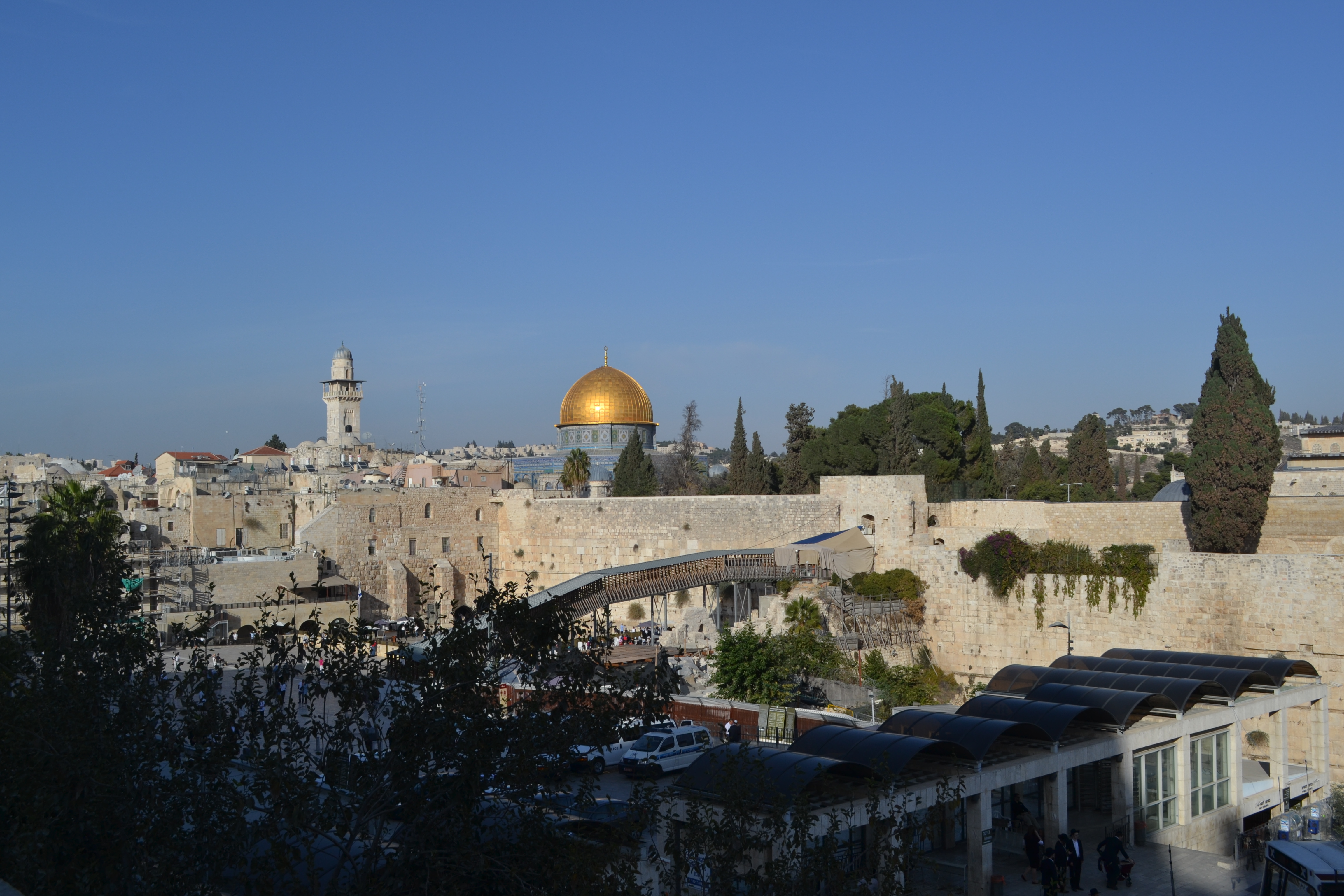By Junart Kim S Nieva
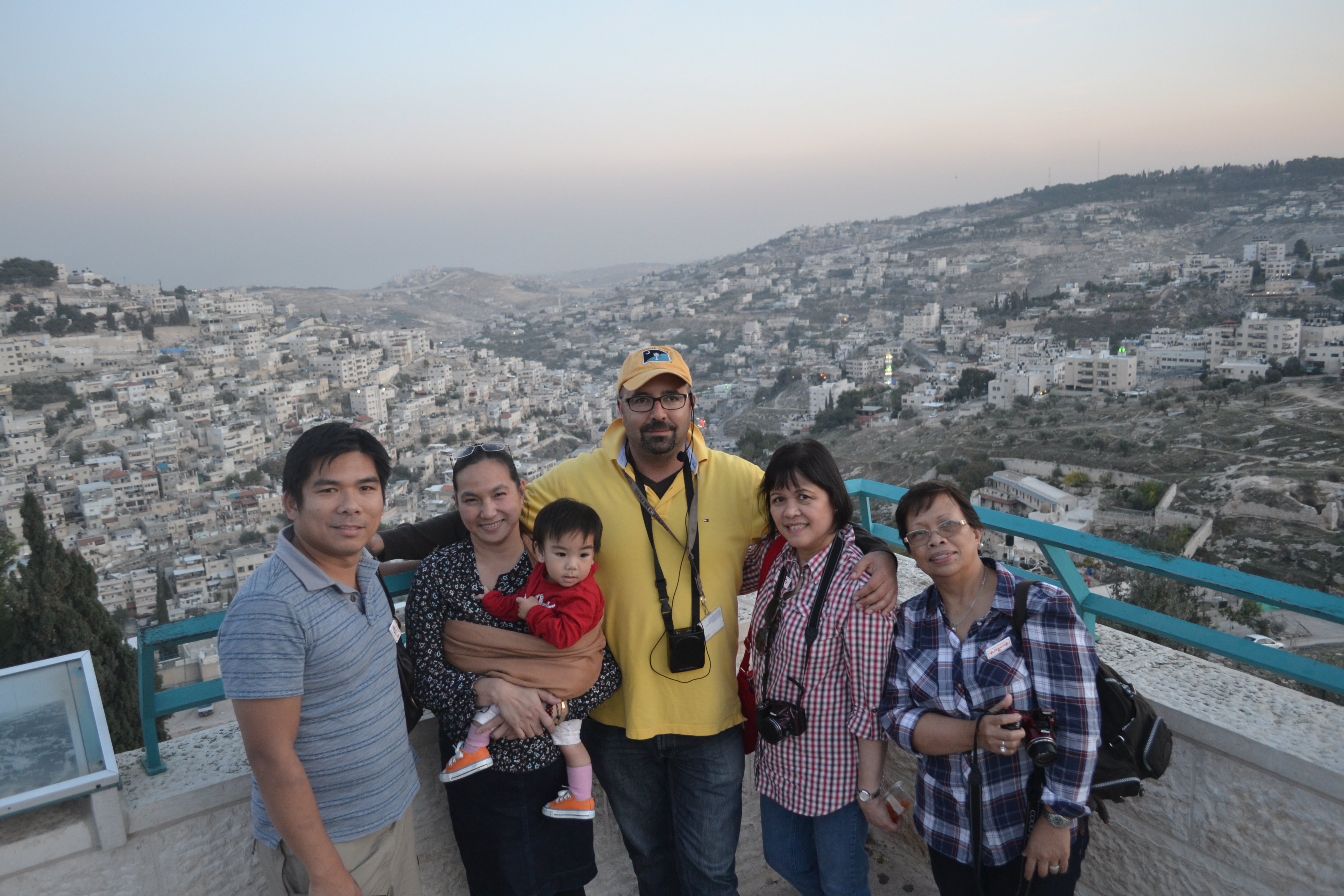
Most children’s (and sometimes adult!) party will not be complete without the famous game ‘Trip to Jerusalem’ (musical chairs), and I’ve always wondered why it was named as such. I’ve realized that there is a deep meaning behind it, and this is where history comes in. We know that Israel, particularly the Holy City of Jerusalem, has been coveted for many years by three major world religions – Judaism, Islam, and Christianity. From history, we knew how it was conquered, occupied, destroyed, reclaimed, restored; in medieval period, the occupation of Muslims, the quest of the Crusaders – the cycle went on. Even today, the State of Israel seems always in danger, though not so much in religious aspect, but more in geopolitical sense. Truly, there is no other city that has caused so many conflicts than Jerusalem. Hence, the parlour game of chairs in a circle, with people racing to occupy them. The player left without a chair is eliminated. Odd one out!
It was just one of my wildest dreams to come and visit one of the most popular, if not controversial, and probably the most sacred places in the planet – Israel. I have always thought that due to political (yes, not religious) distress happening in and surrounding the area, visiting would be impossible. But obviously, that was wrong. Thanks to my mom who treated me on a pilgrimage to the center of the Holy Land – Israel and Palestine – another dream was realized.
Our exodus began upon joining Special Pilgrimages Ltd, an Essex-based tour company with good reputation on pilgrimages to the Holy Land. The more or less four-hour air travel from London to Ben Gurion airport in Tel Aviv went smoothly. The Jerusalem experience happened on our second day to the Holy Land…
Thus saith the Lord God – this is Jerusalem; I have set it in the midst of the nations and countries that are round about her. – Ezekiel 5:5
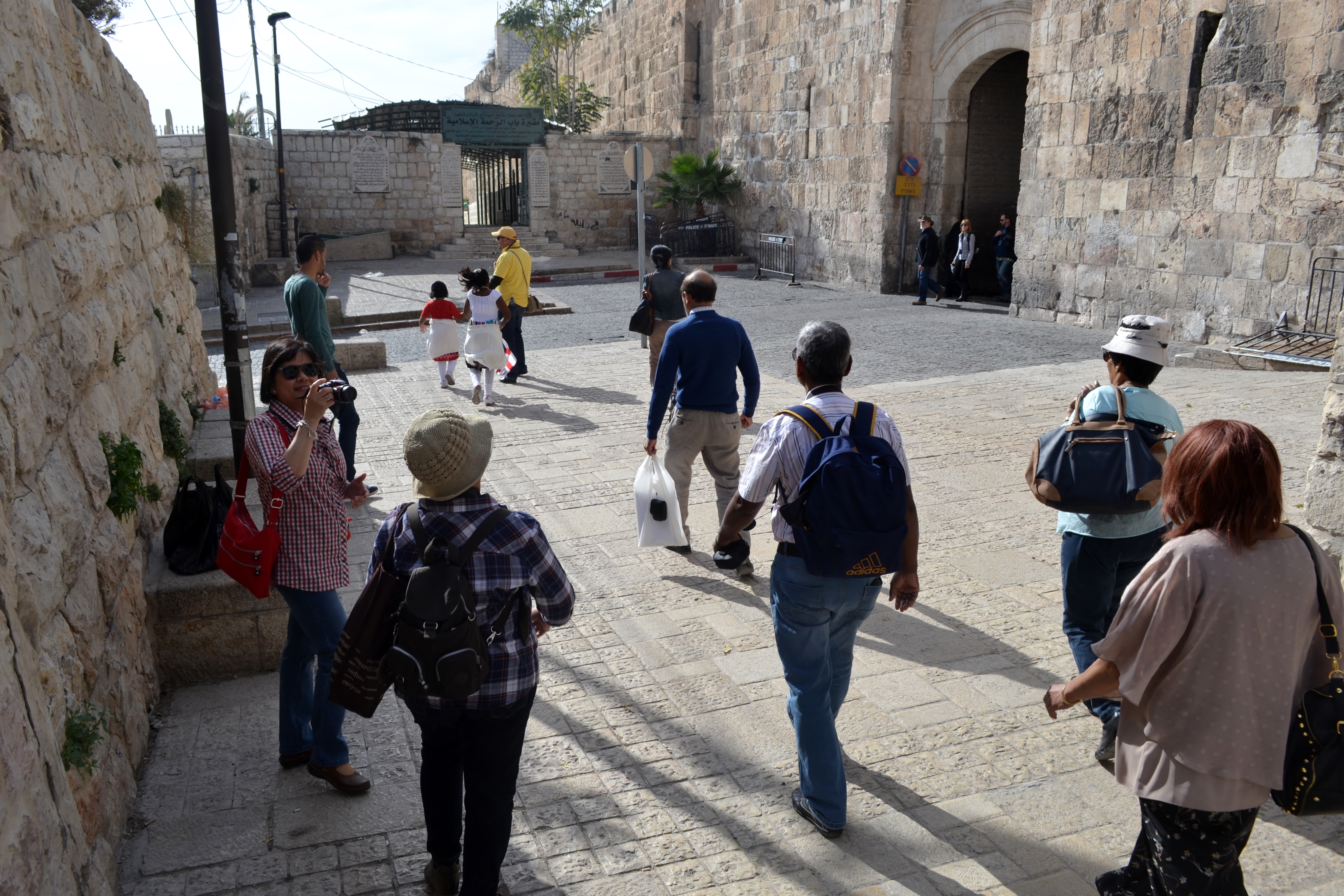
Clearly a lot of Biblical events happened in Jerusalem; it is here where as a baby Jesus was presented to Simeon the priest, and as an adolescent He was found by Mary and Joseph in a temple, discoursing with Rabbis. More importantly, this is the place where His ‘passion’ took place.
Considered sacred to Judaism, Islam and Christianity, I am delighted to learn that believers of these religions live peacefully altogether inside this city. This is evident even to Israelis and Palestinians (who I consider the main players in the game of chairs in today’s world) as both claim Jerusalem to be the capital of their own states. While it is true that there is no perfect union, and that conflict may sometimes arise, at least respect among each other prevails.
Top tip from our very knowledgeable guide Mahdi, “Upon entering the Old City, always stay with the group; don’t spread apart. If there’s a gap, there’s a good chance you might get lost”. And it’s true; thousands of pilgrims from all over the world come to the Holy City any time of the year.
“Jerusalem is one of the longest inhabited cities in the world, people lived here the past 7000 years non-stop,” Mahdi narrated, “It is an archaeological mount, structures built on top of each other.” True enough, the coveted city has been occupied by various nations over time, so it won’t be a surprise anymore. The Old City is divided into three districts – the Muslim Quarter in the northeast, Christian Quarter to the west, and the Jewish Quarter down south.
Of the eight gates we entered through the Lion’s Gate (also known as St Stephen’s Gate) and walking through the cobbled-streets reminded me of Intramuros, only the walls are beige in colour. “The present walls were constructed during the time of Turkish Sultan Suleiman in the 1500s,” said Mahdi, “In modern times, the government decided to cement it to prevent rainwater from damaging the stones through the gaps,” he continued. One UNESCO World Heritage Site crossed off my bucket list!
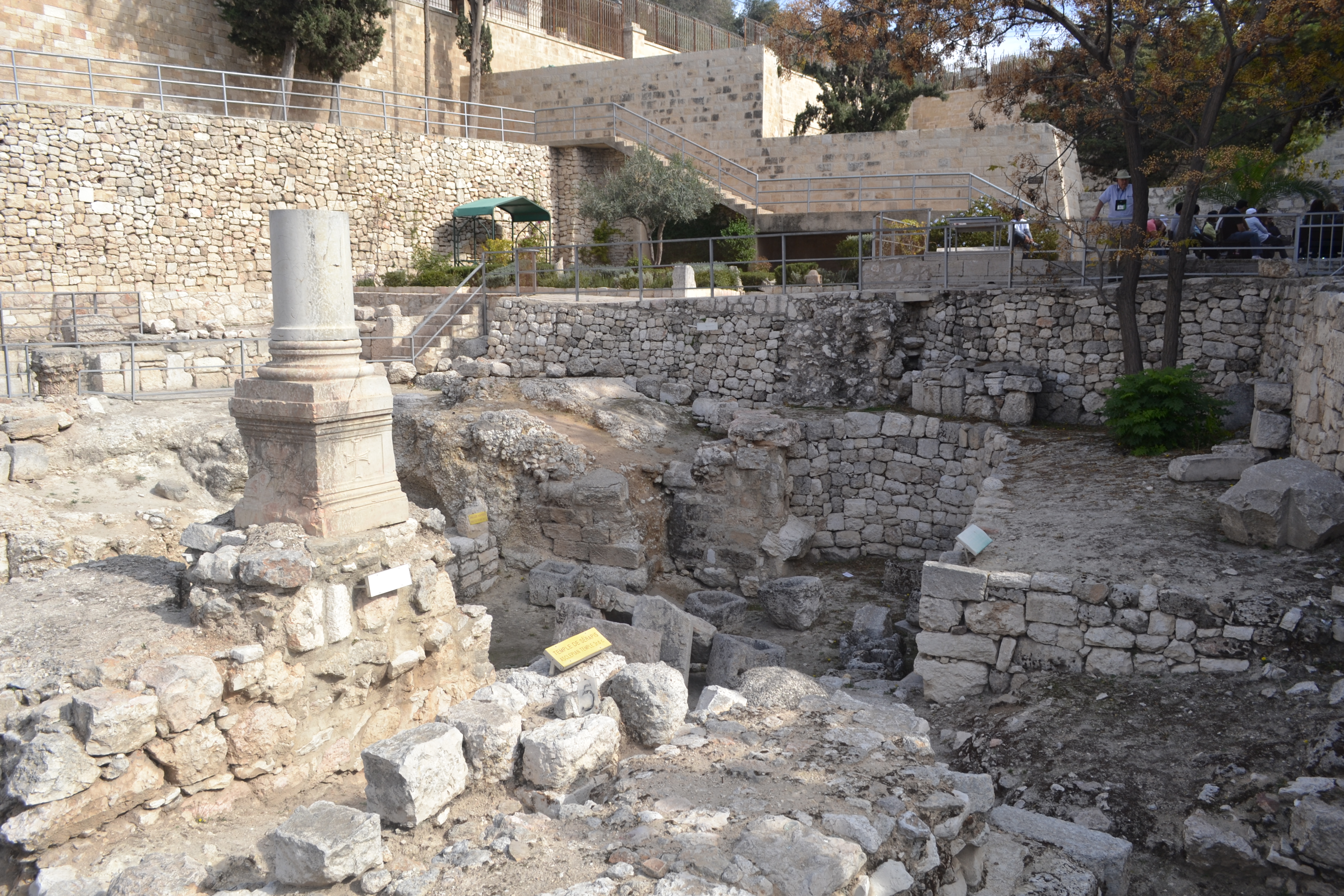
Our first destination was the Pools of Bethesda, in the Muslim Quarter, made famous by Jesus’s healing of the crippled man (John 5:2-18). This place was a former water reservoir, designed to keep rainwater for the citizens. Although it is now in ruins and rubbles are everywhere, the site remains a symbol of miracle and healing, not to mention a mark of ancient technology. Adjacent to it is a church attributed to St Anne, dubbed as the most beautiful and best-preserved Crusader church in Jerusalem, currently managed by the French White Fathers. It is traditionally believed to be the house of Jesus’s grandparents, thus, making it Mary’s birthplace as well. What a joy to have seen the site of the Immaculate Conception!
But the things which God announced beforehand by the mouth of all the prophets, that His Christ would suffer, He has thus fulfilled. – Acts 3:18
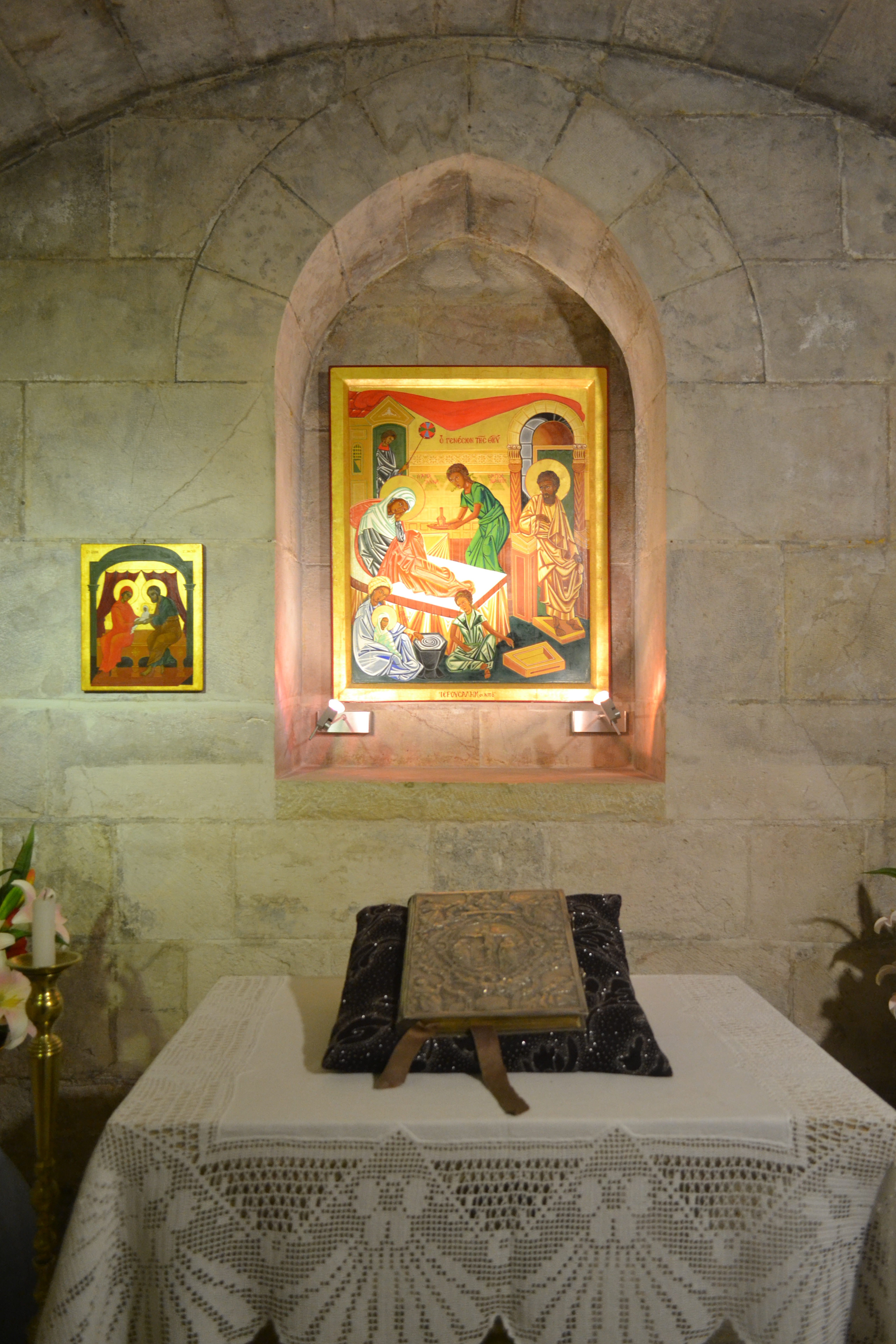 With the Church of St Anne as the starting point, we did our Via Dolorosa (Stations of the Cross). Developed during the Middle Ages, the route with fourteen stations concludes at the Church of the Holy Sepulchre. I had goose bumps. To tread on the footsteps of Jesus in His passion? It truly didn’t seem real at the start. But as the day progressed, and we got deeper and deeper into the Old City, it dawned on me – everything is real, and I must take advantage of it. One would remember Visita Iglesia since most of the stations are housed in a chapel. The care of each spot isn’t under one only, albeit free for all; some belong to the Armenians, others to the Catholic Franciscans. The Way of the Cross would last about two hours, including Bible readings and personal reflections on each spot. Donations are not compulsory but encouraged for the maintenance of each chapel.
With the Church of St Anne as the starting point, we did our Via Dolorosa (Stations of the Cross). Developed during the Middle Ages, the route with fourteen stations concludes at the Church of the Holy Sepulchre. I had goose bumps. To tread on the footsteps of Jesus in His passion? It truly didn’t seem real at the start. But as the day progressed, and we got deeper and deeper into the Old City, it dawned on me – everything is real, and I must take advantage of it. One would remember Visita Iglesia since most of the stations are housed in a chapel. The care of each spot isn’t under one only, albeit free for all; some belong to the Armenians, others to the Catholic Franciscans. The Way of the Cross would last about two hours, including Bible readings and personal reflections on each spot. Donations are not compulsory but encouraged for the maintenance of each chapel.
The tenth to the fourteenth stations are within the premises of the Church of the Holy Sepulchre, one of the two most important Christian churches in Israel, the other being the Church of the Nativity. The Roman Emperor Constantine ordered its construction in 325 AD. As Filipinos we can relate our tradition of ‘Santacruzan’, since this church is heavily tied to Saint Helena, Constantine’s mother, and her quest in finding the Cross of the Messiah. Destroyed twice first by the Persians then by Caliph Hakim, the present sanctuary is erected by the Crusaders. This is one of the vastest churches I have seen and ever been in my entire life, not to mention the most occupied! One could easily be lost, since many pilgrims from various Christian sects come to pray and pay homage to the place where it is believed Jesus was crucified and then buried. Golgotha, Calvary, place of the Skull – I’ve just been reading them from the Bible and books, but now standing on its very ground. As the headquarters of the Greek Orthodox Patriarch, one could see colourful embellishments, Byzantine paintings, and remarkable mosaics. After carefully ascending stairs, we reached the place of the crucifixion. The site where Christ’s cross stood is marked by a silver disk on the floor, while black disks on its sides mark the crosses of the two bandits crucified with Him at that time. It is a bit dark, so a good setting up of camera for limited light scenes is advisable. Courtesy to other pilgrims must be doubly observed at this stage, since time is of the essence. The Stone of Unction (Anointing) – thought to be the spot where Mary received Jesus’s body, is another important marker within the church. We had the chance to touch the preserved stone shaped like a bed, and I even saw some kissing it.
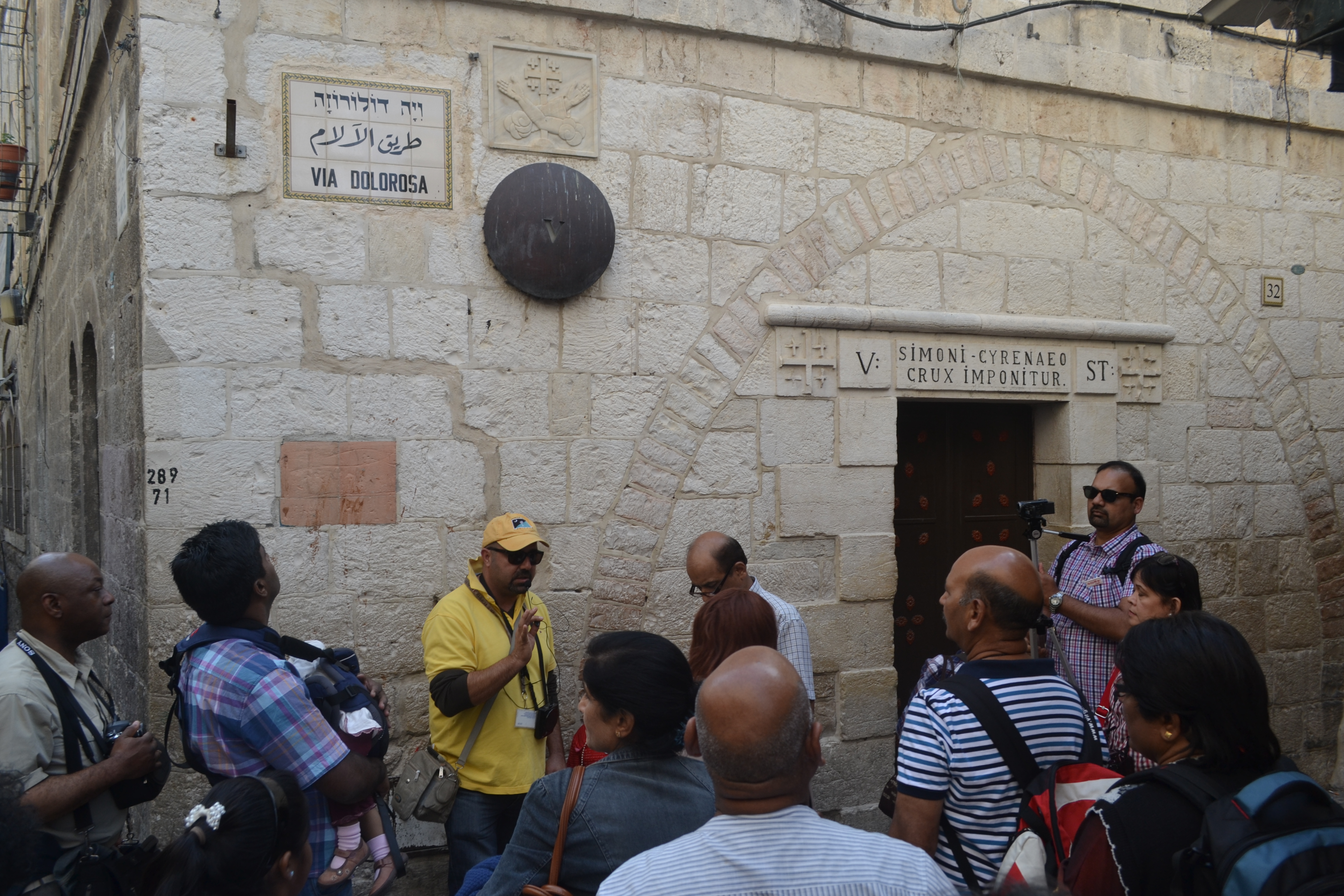
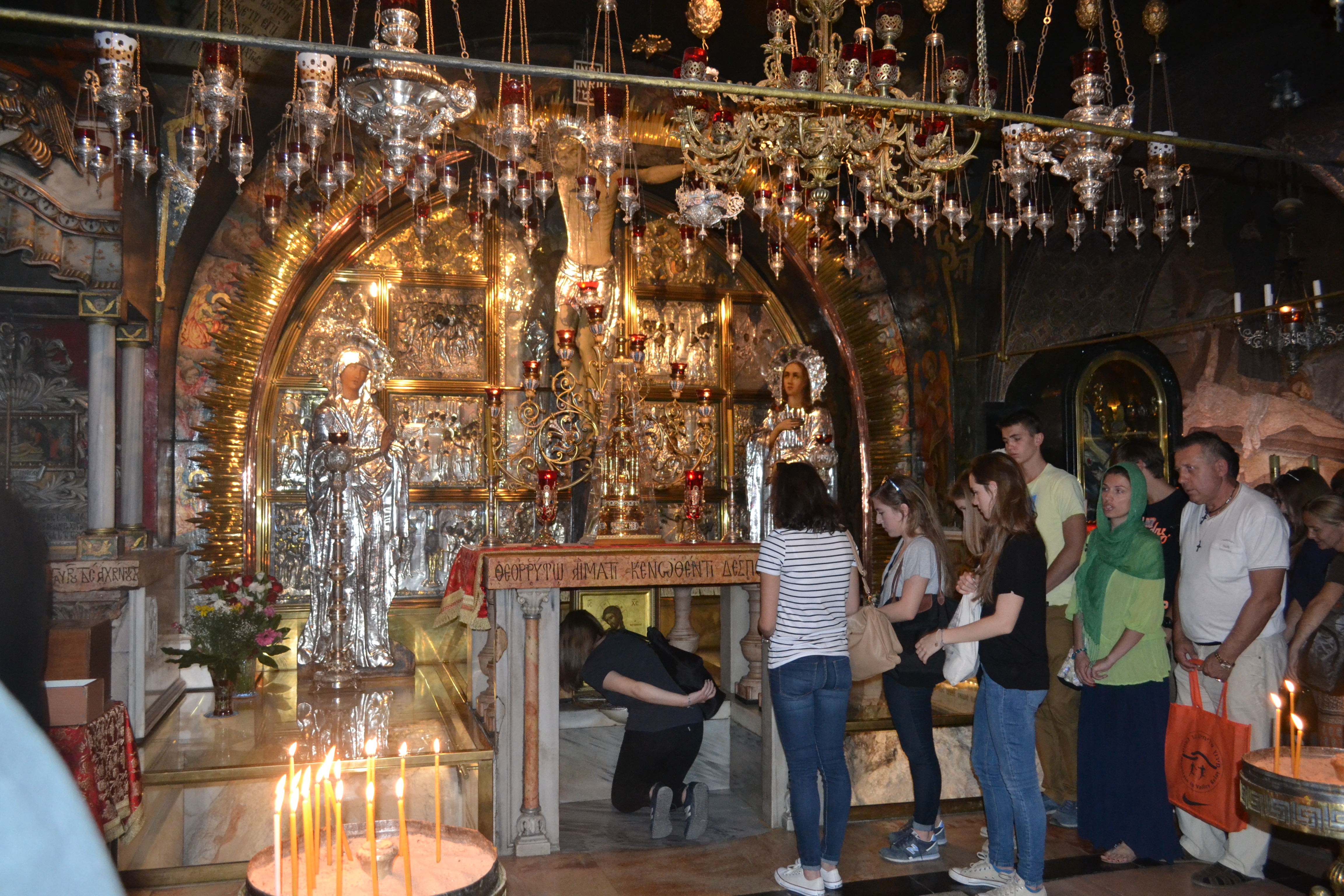
A short walk from the spot of the ‘Pieta’ is the most queued place within the church, and according to some, the holiest place in Christendom – the Holy Sepulchre itself. The burial site, and of course of the resurrection, is housed in a richly-decorated aedicule, at the centre of a rotunda. I think we waited for at least half an hour before we were able to get inside. About ten people can wait on the first station, known as the room of the angel, where Mary Magdalene saw the angel that brought the good news. Only one person can get inside the room where the sacred rock covered in marble slab is as it is small, and taking of photos isn’t allowed. At this time, the best thing to do is just savour the moment, say a quick prayer and touch the tomb, since each pilgrim can’t stay for too long. One fascinating fact is that within the tomb, forty-two lamps from Christian sects burn all day and night to serve as light to the Holy Sepulchre.
Who is left among you who saw this house in its former glory? How do you see it now? Is it not as nothing in your eyes? – Haggai 2:3
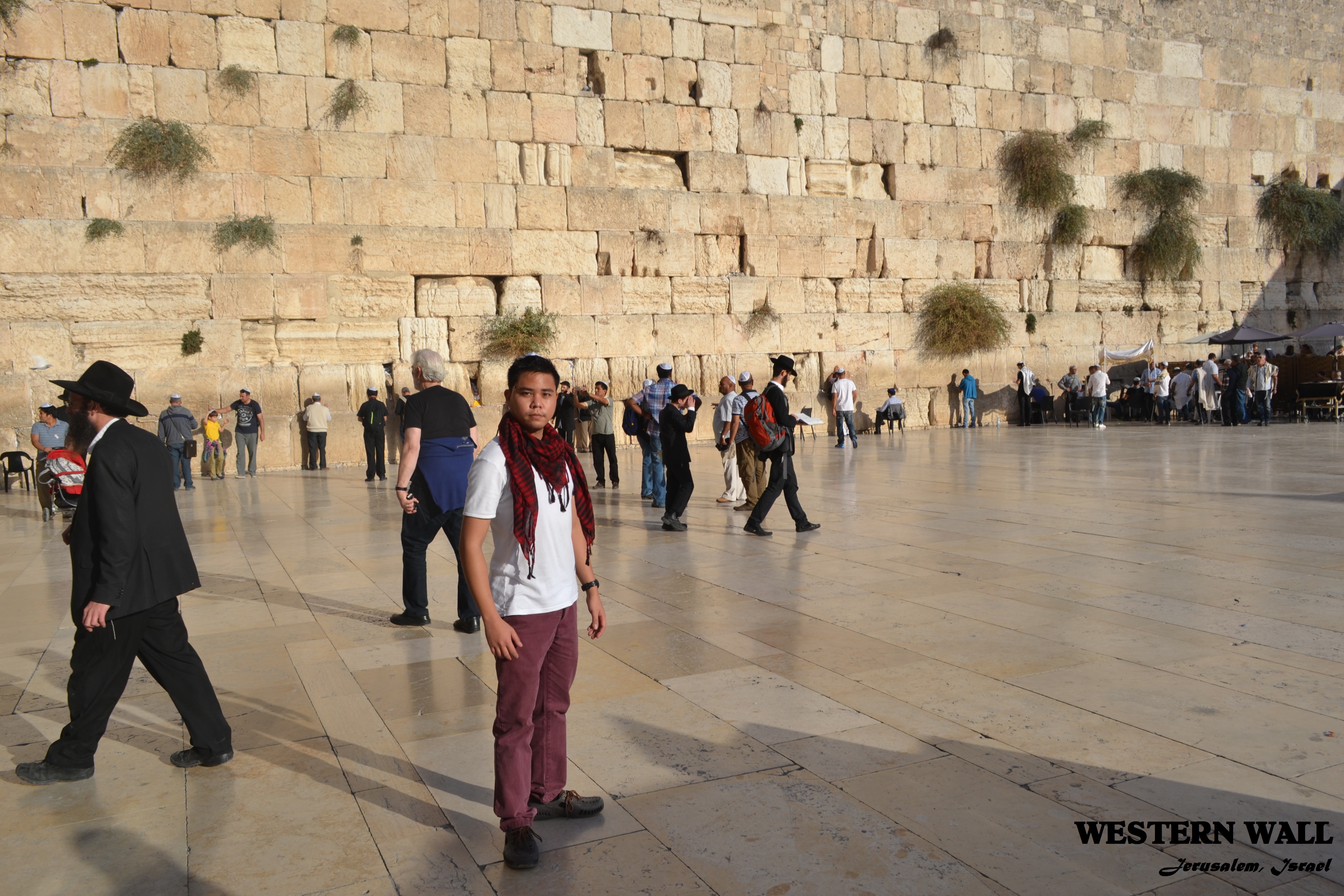
After noon we left the church and headed to the Crusader Market, in the Jewish Quarter for lunch. We didn’t stay too long so we can maximize the time. From the so-called holiest place in Christendom, we went to the holiest site and structure in Judaism – the Western Wall, also known as the Wailing Wall. The wall is said to be the remains of the Second Temple, which was destroyed in 70 AD. Jews, and some Christians, come here to pray, since it has the closest relation to the Ark of the Covenant tabernacle. There is a division at the middle part, since men and women must pray separately. Visitors regardless of religion must also wear a Kippah, a Jewish cap, as a sign of respect and reverence to this holy site. A popular tradition is placing written prayers on the cracks of its walls, a practice I, of course, did not fail to miss.
Two constant prayers being asked by devotees in this place are the coming of the Messiah, and for the eternal peace of Jerusalem.
But ye are come unto mount Sion, and unto the city of the living God, the heavenly Jerusalem, and to an innumerable company of angels. – HEBREWS 12:22
Just before sunset, we headed to Mount Zion, exiting the Old City premises through the Zion Gate. The hill is one of the most prominent places in the Holy Land as many Bibilical events in the New Testament happened here. We saw a panoramic view of Jerusalem – Kidron Valley, City of David, Mount of Olives – and other iconic structures within the Old City such as the Islamic Dome of the Rock in the Temple Mount, with its golden dome shining in the afternoon sun. We felt the silence slowly creeping in the walled city at the close of day.
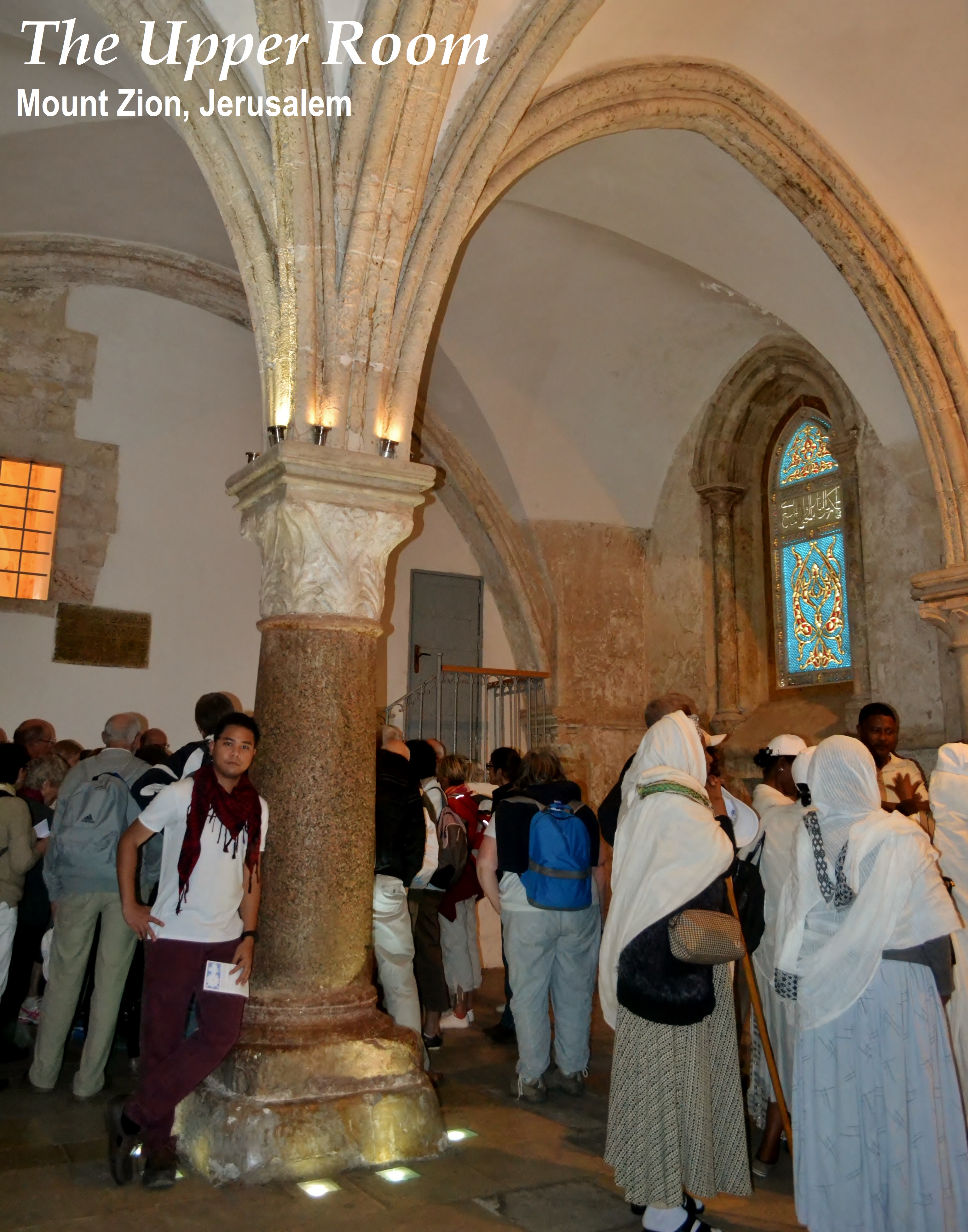
This place is closely associated with the ‘twelve’. The Coenaculum, commonly known among pilgrims as the ‘Upper Room’, is the site where Jesus instituted the Eucharist. We pictured in our minds Da Vinci’s famous painting ‘The Last Supper’, and began imagining where they might have seated and had the gracious meal. It then holds a special place in the history of the Holy Mass as it is where the consecration of the bread and wine happened. Another memorable episode is the washing of the feet of the Apostles, a mark of Jesus’s humility. Recognized in the 4th century, the present structure has Gothic windows and Crusader arches and columns.
Just below the Upper Room is David’s Tomb – a place venerated by Jews, Christians and Muslims. Just like in the Western Wall, pilgrims must wear a Kippah as a sign of respect, and men are separated with women. There is a divider, so one end of King David’s large coffin is for the male while the other end is for the females. How extraordinary the feeling is, being able to see the tomb of Israel’s most famous shepherd-King!
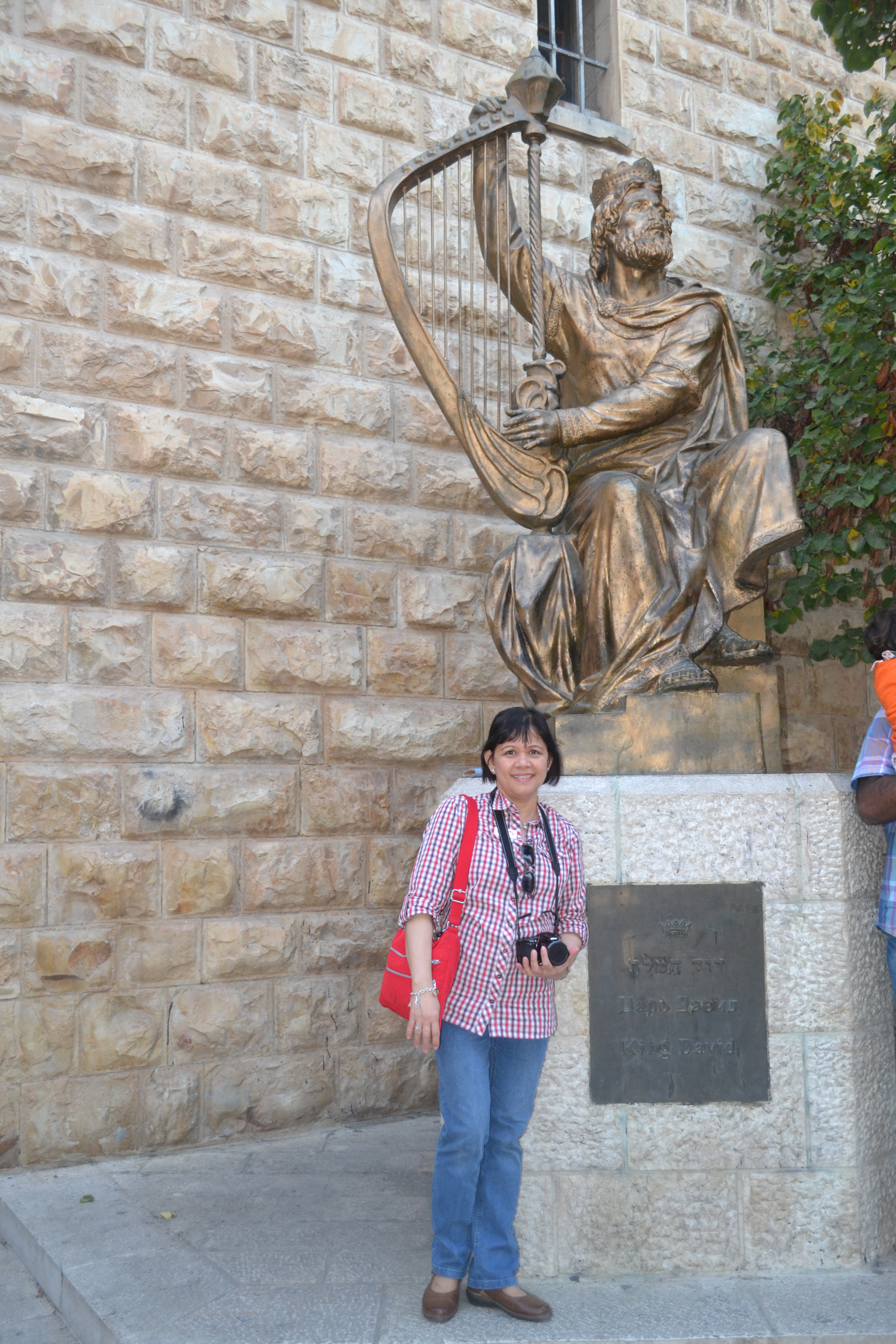
The Benedictine-run Dormition Abbey is probably the central structure in this holy mount, not only because of its towering spires but also due to the significance it holds. This circular church is believed to be the site where Mother Mary died and was assumed into heaven. Traditionally it is also believed to be the site where the Holy Spirit descended upon the Apostles – thus becoming the birthplace of the Church. The first level is a chapel, then spiral staircases lead to a crypt below, where a sarcophagus-like statue of a ‘sleeping Mary’ lies at the center.
Evening set in when we arrived at the last destination, with the warm atmosphere gently replaced with cool breeze. The Church of St Peter in Gallicantu is built in commemoration of Peter’s denial of Christ, and it is depicted through a statue in the courtyard. A golden rooster is placed on its roof, as remembrance to the cock that crowed after Peter’s third denial of Jesus. This four-levelled church is built over what is believed to be the house of the High Priest Caiaphas. It is well-decorated, with colourful mosaics and notable displays. I wondered what it must have been like on a sunny day, when stained-glass windows grandly reflects light inside. The level (guardroom) prior to the dungeon is like an exhibit of ancient structures. The dungeon is believed to be the place where Jesus might have been detained overnight (Maundy Thursday to Good Friday series of events). We descended to what is known as ‘Christ’s Cell’ (Sacred Pit), and felt the cold and lonely atmosphere… it is where the group had our final Bible reading and reflection prayers.
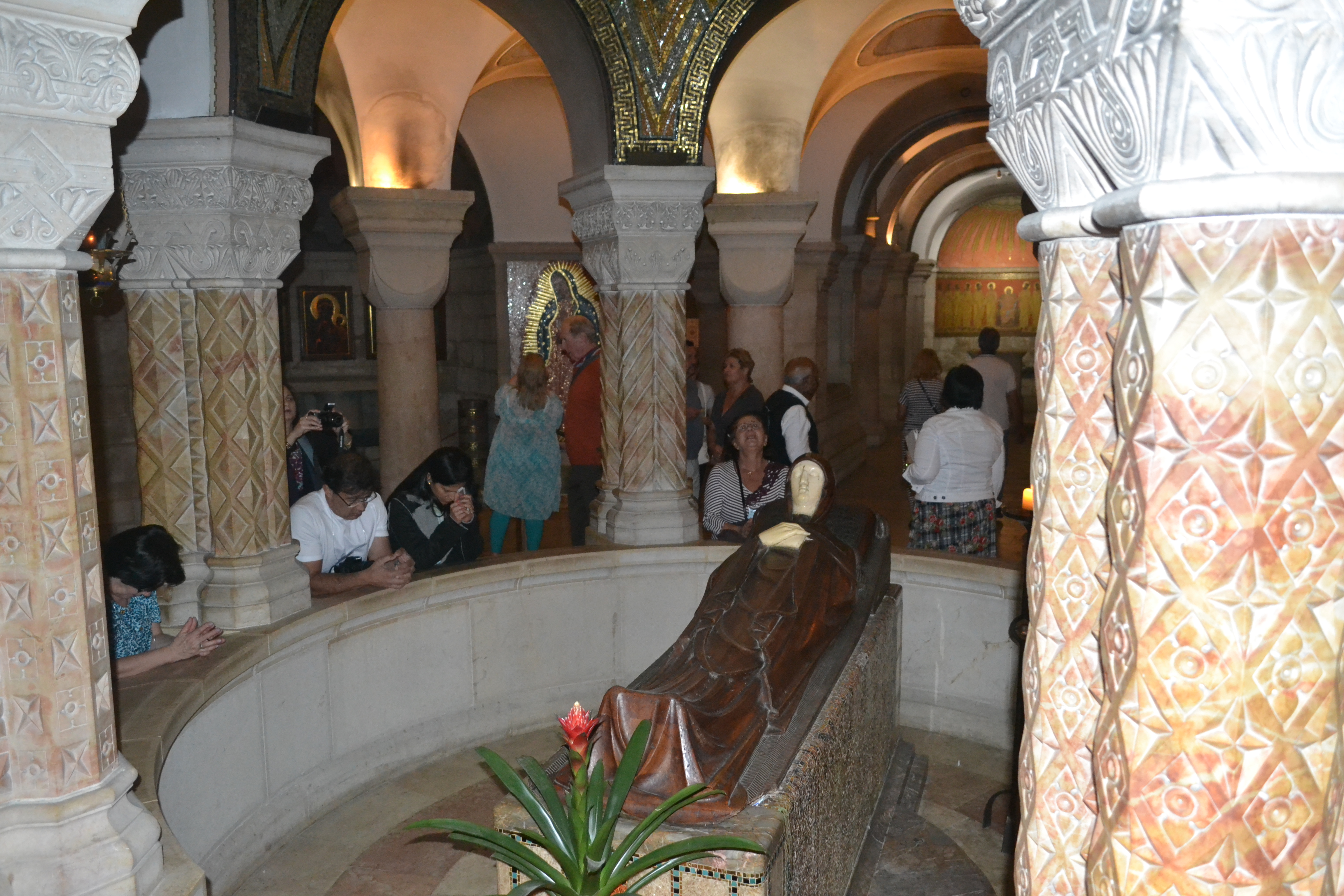
But seek ye first the Kingdom of God, and his righteousness; and all these things shall be added unto you. – Matthew 6:33
The trip to Jerusalem has surely become one of my most unforgettable journeys. It did not only made words visual and concrete, but also let me have a deeper, stronger understanding of the scriptures. I know of a time when the Holy Land will be open for all, safe for everyone to visit. Christians or non-Christians alike, the historical and religious significance of the Promised Land to the world will forever remain. Jerusalem may have been a city of discord and bloodshed, but it is also a city of peace and prayers and hope. When people live with love and in peace, then the ‘Kingdom of Heaven’ will be attained.
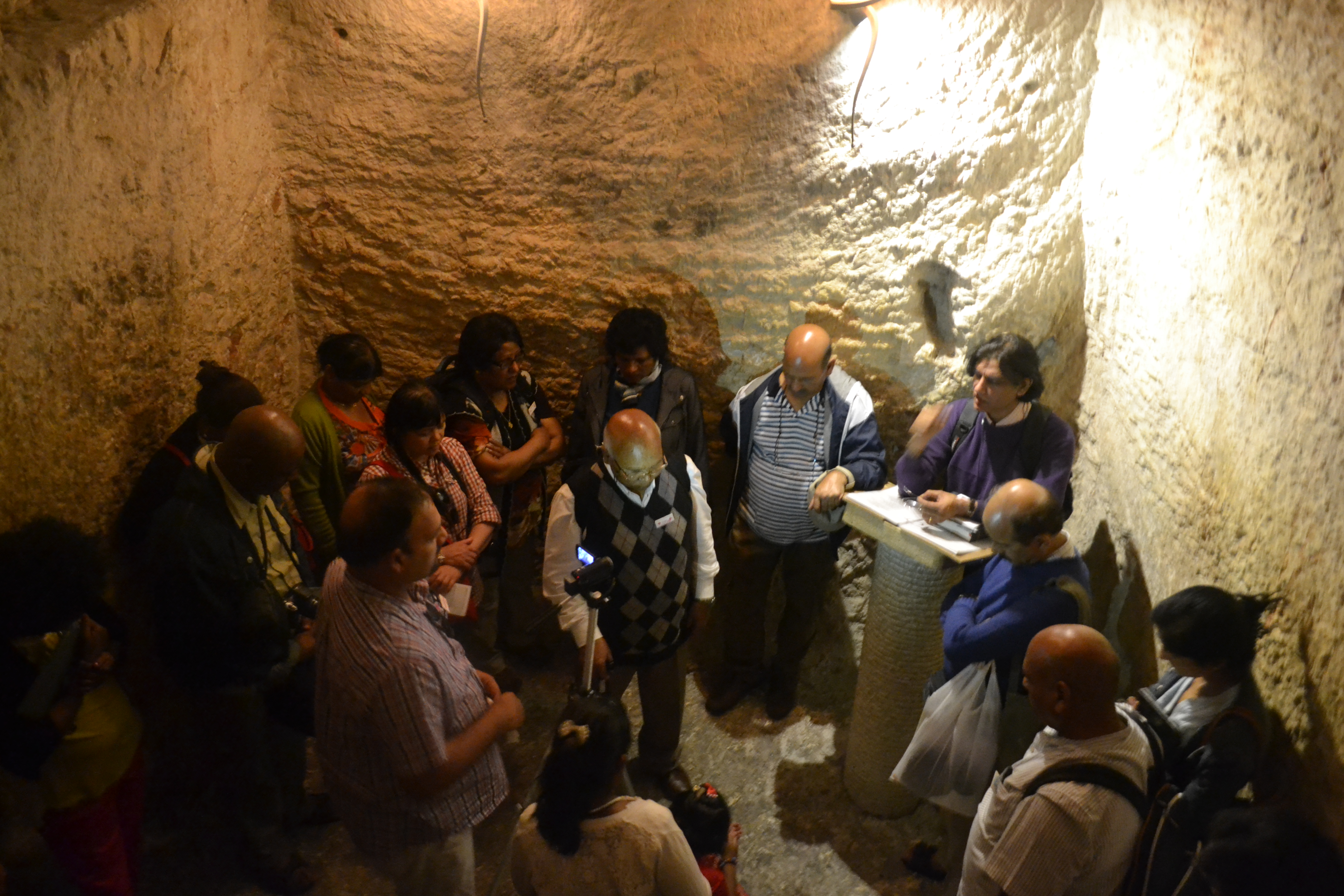
No more racing for chairs until only one remains; no more players vying for a place in a circle. No more entity singled out, and certainly no more fighting over something that is meant for all.
I’ll continue praying for the peace of Jerusalem; let’s all.
PILGRIMAGE TIPS:
- The best time to visit would be from October to February, when there are less crowds and the weather’s not too hot and humid.
- It would be wise to carry Shekels and US Dollars at all times.
- While a tourist can wander freely, a pilgrim should always stay with the group. When in doubt, ask the guide.
- Don’t forget to bring your own Bible (and Rosary if you like).
- Since it will involve entrance to sacred buildings, make sure to wear modest yet comfortable clothing. Footwear should be fit for trekking; avoid slippers wear possible.
- Travel light; as much as possible do not bring valuables. Ensure that your passport is securely kept, close to the body.
- The weather is generally warm, akin to the Philippines. Always carry a bottle or two of water to drink.
- Remind yourself to be respectful to fellow pilgrims and locals at all times.
